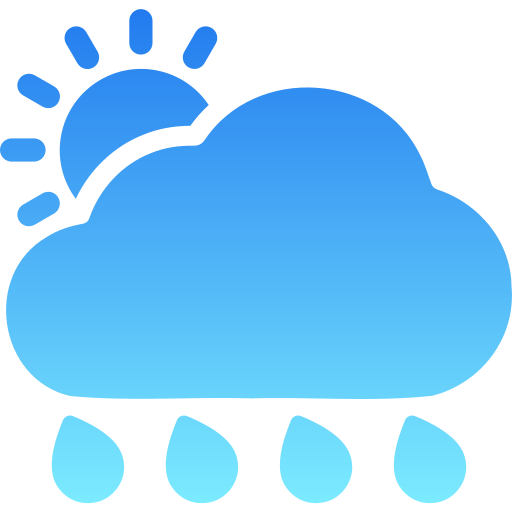How Weather is Predicted: Understanding Atmospheric Patterns
Published by Andrew in Information the 15/06/2023 at 10:50
How weather is predicted ?
Weather prediction plays a critical role in modern-day society, impacting everything from transportation and agriculture to emergency response and disaster management. It allows us to make informed decisions, plan ahead, and avoid potentially dangerous or costly situations. But have you ever stopped to wonder how meteorologists are able to predict the weather with such accuracy? In this blog post, we'll dive into the fascinating world of weather forecasting and explore the science behind it. From analyzing atmospheric patterns to utilizing cutting-edge technology, we'll uncover the secrets behind this vital aspect of modern life. So sit back, relax, and prepare to be amazed by the incredible process that goes into predicting the weather.
Explaining atmospheric patterns and how they influence weather predictions

The first step in weather prediction is understanding the atmospheric patterns that affect our weather. These patterns include things like high and low pressure systems, jet streams, and temperature gradients. By analyzing these patterns, meteorologists can make predictions about weather conditions that will likely affect a particular region. High-pressure systems, for example, typically bring clear skies and dry weather, while low-pressure systems usually bring clouds, rain, and storms.
-
Jet streams
Jet streams are strong currents of wind that flow high up in the atmosphere. They play a critical role in weather prediction because they can influence the movement of weather fronts and systems. By studying the speed and direction of jet streams, meteorologists can make predictions about when and where storms and other weather events will occur.
-
Temperature Gradients
Temperature gradients are the differences in temperature between two locations. They can help meteorologists predict where high and low-pressure systems will form, which in turn affects the weather conditions in those regions. For example, if there is a steep temperature gradient between a warm front and a cold front, there is likely to be severe weather conditions like thunderstorms and tornadoes.
Discussing the use of historical data and computer models in weather prediction
Meteorologists rely on historical data and computer models to make predictions about the weather. Historical data includes weather records from the past, such as temperature, precipitation, and wind speed. By analyzing this data, meteorologists can identify trends and patterns that may give clues to future weather conditions. Computer models, on the other hand, allow meteorologists to simulate weather conditions based on a range of input data, such as temperature, humidity, and wind speed. This can help them make more accurate and detailed predictions about future weather patterns.
Highlighting the importance of real-time data collection through weather stations, satellites, and other instruments

Real-time data collection is vital for accurate weather prediction. Weather stations, satellites, and other instruments collect data such as temperature, humidity, wind speed, and precipitation levels. This data then gets analyzed by meteorologists in real-time, allowing them to make up-to-the-minute predictions about current and future weather conditions. Weather stations, for example, can provide detailed information about specific locations, while satellites provide a more global view of weather patterns.
- Weather Radar
Weather radar is one of the most important instruments used in weather prediction. It uses radio waves to detect precipitation and measure its intensity and movement. This data allows meteorologists to identify the location and intensity of storms, as well as track their movement over time. Along with other real-time data, weather radar helps meteorologists make predictions about the severity and duration of storms or other weather events.
Examining the role of meteorologists in analyzing data and making predictions

The field of weather prediction is constantly evolving, with new technologies and methods being developed all the time. One area of focus is improving the accuracy of computer models, by refining the algorithms and integrating more real-time data. Another area of focus is developing new instruments for collecting data, such as drones and other unmanned aerial vehicles. These technologies could provide even more detailed information about specific regions, allowing for more accurate and personalized weather predictions.
- Artificial Intelligence
Artificial intelligence is another area of focus for improving weather prediction. AI can help meteorologists sift through large amounts of data and identify patterns that may be too complex for humans to detect. This could lead to even more accurate and timely weather predictions, and could also help identify weather patterns that may pose a risk to public safety.
In conclusion, weather prediction is a complex and constantly evolving field, driven by a range of technologies and methods. By analyzing atmospheric patterns, using historical data and computer models, collecting real-time data through instruments and stations, and relying on the expertise of meteorologists, we are able to make accurate predictions about future weather conditions. As technology continues to advance, we can expect even more detailed and personalized weather predictions, helping us to make informed decisions and stay safe in a world increasingly affected by extreme weather events.
